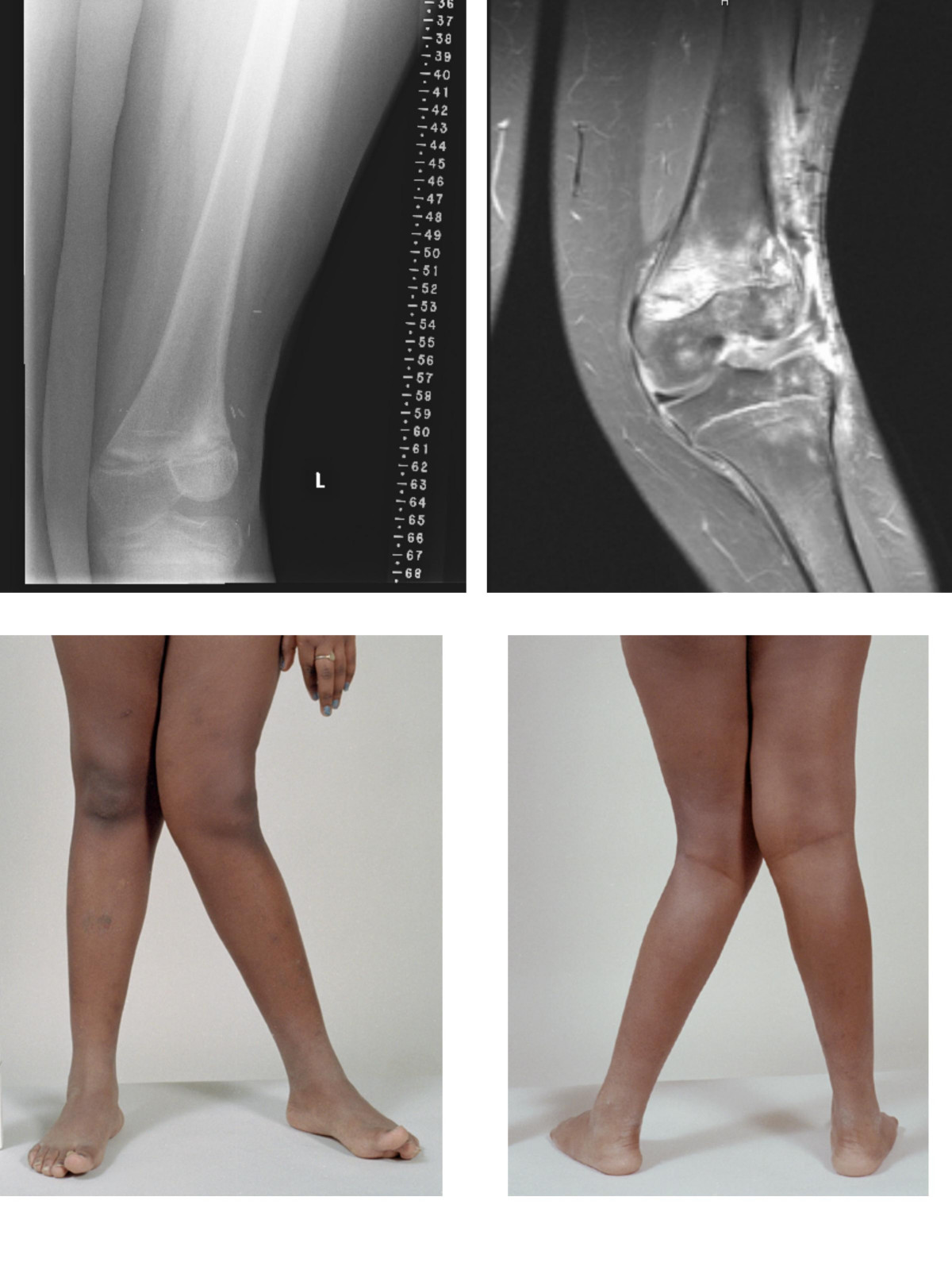Valgus deformity
(Redirected from Pes valgus)
Editor-In-Chief: Prab R Tumpati, MD
Obesity, Sleep & Internal medicine
Founder, WikiMD Wellnesspedia &
W8MD medical weight loss NYC and sleep center NYC
| Valgus deformity | |
|---|---|

| |
| Synonyms | Valgus alignment |
| Pronounce | N/A |
| Specialty | N/A |
| Symptoms | Joint pain, instability, gait abnormalities |
| Complications | Osteoarthritis, ligament injury |
| Onset | Can be congenital or acquired |
| Duration | Chronic |
| Types | N/A |
| Causes | Genetic factors, trauma, arthritis |
| Risks | Obesity, age, previous injury |
| Diagnosis | Physical examination, X-ray, MRI |
| Differential diagnosis | Varus deformity, joint dislocation |
| Prevention | N/A |
| Treatment | Physical therapy, orthotic devices, surgery |
| Medication | N/A |
| Prognosis | Varies depending on severity and treatment |
| Frequency | Common in adults and children |
| Deaths | N/A |
Valgus and Varus Deformities: An Overview[edit | edit source]
A valgus deformity represents an abnormal anatomical alignment where the bone segment distal to a joint is directed away from the body's midline, typically described as an outward angling. In contrast, a varus deformity is its antithesis, with the bone angling inwards, towards the central axis of the body.
Understanding Valgus Deformity[edit | edit source]
Definition[edit | edit source]
In a valgus deformity, the distal part of a bone or joint is angled outward. This means it angles laterally, away from the body's midline.
Common Manifestations[edit | edit source]
The most commonly recognized form of valgus deformity in humans is the genu valgum or more colloquially termed, knock-knee. In this condition, when standing with the feet together, the individual's knees touch or overlap, but their ankles do not.
Understanding Varus Deformity[edit | edit source]
Definition[edit | edit source]
Varus deformity, on the other hand, refers to the inward angulation of the distal segment of a bone or joint. This angulation is directed medially, moving closer to the center of the body.
Common Manifestations[edit | edit source]
The classic representation of a varus deformity in the lower limbs is the genu varum, often called bowleg. In this condition, an individual standing with their ankles together would show a distinct gap between the knees.
Causes of Valgus Deformity[edit | edit source]
Valgus deformities can manifest due to a variety of reasons:
- Arthritis of the Knee: Progressive degeneration of the knee joint due to arthritis can lead to valgus knee.
- Traumatic Injuries: Accidents or injuries can damage the joint and surrounding tissues, leading to a misalignment in the form of a valgus deformity.
- Congenital Conditions: Some individuals may be born with conditions that predispose them to develop valgus alignments.
- Other Pathological Conditions: Certain diseases and conditions can weaken or damage joints, resulting in valgus deformities.
Management and Treatment[edit | edit source]
Treatment of valgus or varus deformities is determined by the underlying cause, severity, and associated symptoms:
- Physical Therapy: Therapeutic exercises can help strengthen muscles and improve joint alignment.
- Orthotic Devices: Braces or shoe inserts might be recommended to correct or stabilize the deformity.
- Surgery: Severe deformities, particularly those causing pain or functional impairment, may require surgical intervention.
Conclusion[edit | edit source]
Both valgus and varus deformities are notable anatomical misalignments that can impact an individual's mobility, functionality, and overall quality of life. Recognizing these deformities and understanding their underlying causes are paramount in ensuring effective treatment and management.
See Also[edit | edit source]
Search WikiMD
Ad.Tired of being Overweight? Try W8MD's physician weight loss program.
Semaglutide (Ozempic / Wegovy and Tirzepatide (Mounjaro / Zepbound) available.
Advertise on WikiMD
|
WikiMD's Wellness Encyclopedia |
| Let Food Be Thy Medicine Medicine Thy Food - Hippocrates |
Translate this page: - East Asian
中文,
日本,
한국어,
South Asian
हिन्दी,
தமிழ்,
తెలుగు,
Urdu,
ಕನ್ನಡ,
Southeast Asian
Indonesian,
Vietnamese,
Thai,
မြန်မာဘာသာ,
বাংলা
European
español,
Deutsch,
français,
Greek,
português do Brasil,
polski,
română,
русский,
Nederlands,
norsk,
svenska,
suomi,
Italian
Middle Eastern & African
عربى,
Turkish,
Persian,
Hebrew,
Afrikaans,
isiZulu,
Kiswahili,
Other
Bulgarian,
Hungarian,
Czech,
Swedish,
മലയാളം,
मराठी,
ਪੰਜਾਬੀ,
ગુજરાતી,
Portuguese,
Ukrainian
Medical Disclaimer: WikiMD is not a substitute for professional medical advice. The information on WikiMD is provided as an information resource only, may be incorrect, outdated or misleading, and is not to be used or relied on for any diagnostic or treatment purposes. Please consult your health care provider before making any healthcare decisions or for guidance about a specific medical condition. WikiMD expressly disclaims responsibility, and shall have no liability, for any damages, loss, injury, or liability whatsoever suffered as a result of your reliance on the information contained in this site. By visiting this site you agree to the foregoing terms and conditions, which may from time to time be changed or supplemented by WikiMD. If you do not agree to the foregoing terms and conditions, you should not enter or use this site. See full disclaimer.
Credits:Most images are courtesy of Wikimedia commons, and templates, categories Wikipedia, licensed under CC BY SA or similar.
Contributors: Kondreddy Naveen, Prab R. Tumpati, MD


